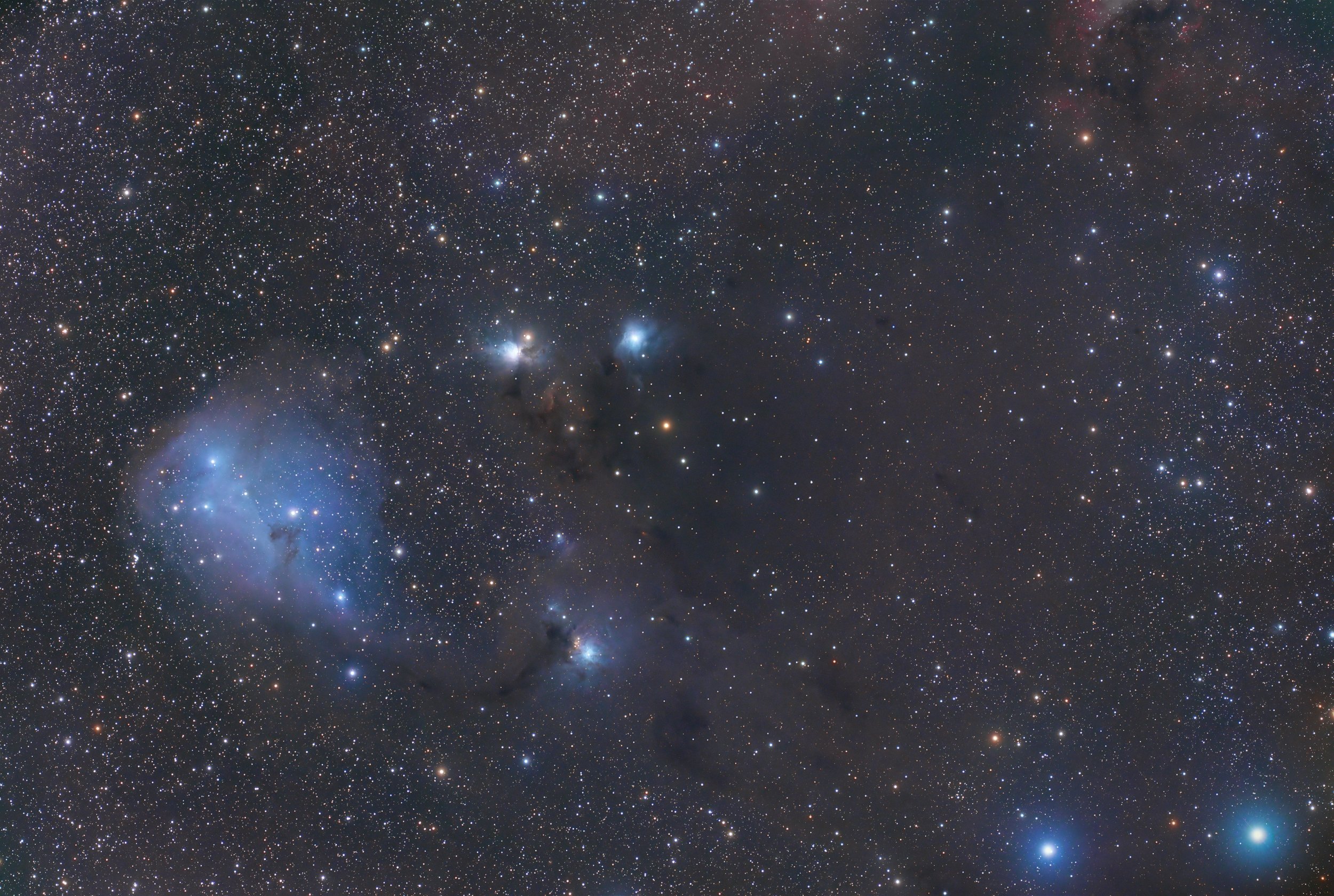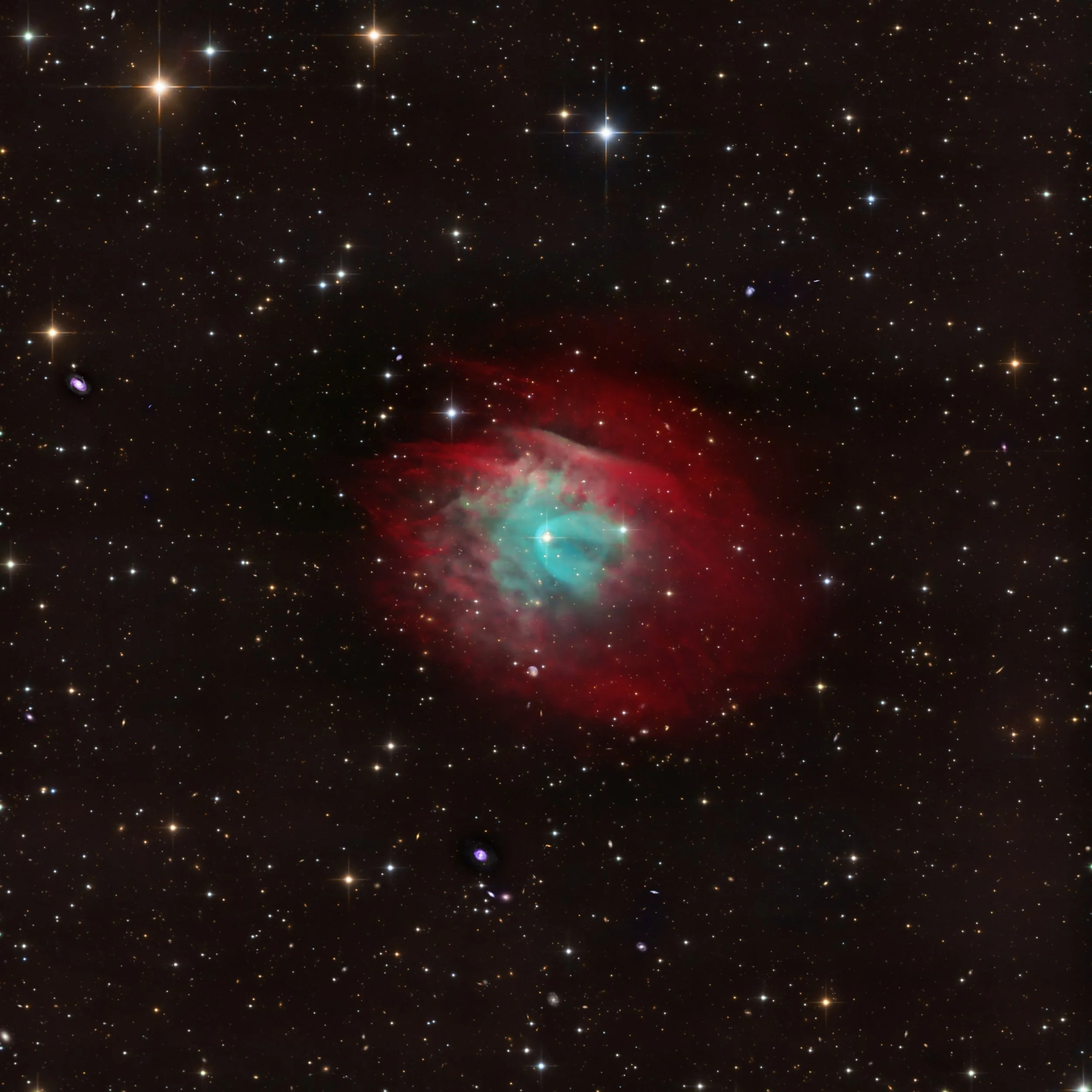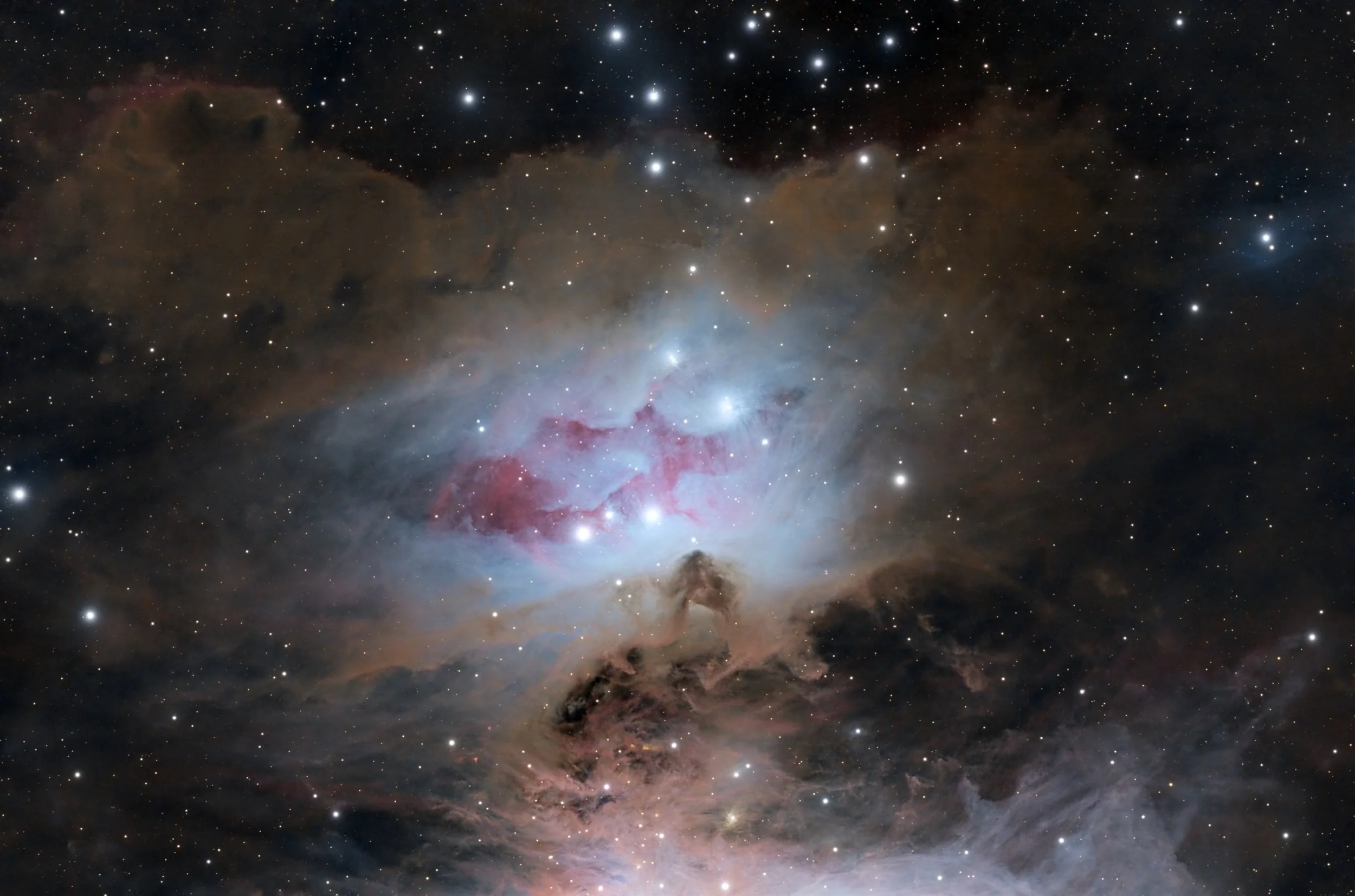
AAPOD2 Image Archives
Sh2-308: The Dolphin-Head Nebula
Sh2-308, also known as the Dolphin-Head Nebula, is a striking bubble of ionized gas in the constellation Canis Major, located approximately 4,500 light-years from Earth. This delicate structure is the result of intense stellar winds emanating from a massive Wolf-Rayet star at its center, sculpting the surrounding material into a luminous shell. The faint blue glow is dominated by oxygen-III emissions, which shine brightly in the ultraviolet light of the central star.
Captured from Rio Hurtado, Chile, using a remote commercial observatory, this view reveals the ethereal beauty of Sh2-308’s expanding shell. Spanning nearly 60 light-years, the nebula is a transient structure in the cosmos, lasting only a few tens of thousands of years. Its intricate shape and soft glow provide a unique glimpse into the life cycle of massive stars and the dynamic processes that shape the interstellar medium.
SH2-278
Nestled in the constellation Orion, SH2-278 is a captivating emission nebula that tells a story of star birth and interstellar artistry. The nebula is dominated by glowing hydrogen-alpha emissions, painting vibrant red hues across the region. Complementing this are stunning blue regions, indicative of reflection nebulae—dust clouds illuminated by the scattered light of nearby stars.
In the left center of the image, delicate structures known as Herbig-Haro objects make an appearance. These rare features are formed when streams of ionized gas from newborn stars collide with surrounding clouds of gas and dust, creating intricate, luminous jets. SH2-278 is a testament to the dynamic processes shaping the cosmos, offering a glimpse into the beauty and complexity of our universe.
Hades SNR
The Hades Supernova Remnant (SNR), an impressive testament to amateur astronomy, is the third largest SNR ever discovered by non-professionals. This massive structure, located in the constellation Auriga, spans an incredible region of the sky and serves as a profound reminder of the violent stellar events that shape our universe.
Characterized by intricate filaments and diffuse clouds of gas, the Hades SNR reveals the remnants of a colossal supernova explosion that occurred thousands of years ago. The faint yet expansive nature of this SNR made it a challenging target to detect, underscoring the dedication and skill of the amateur astronomers who brought it to light. Their discovery adds a significant piece to the puzzle of our galaxy's history, illustrating the critical contributions of amateur astronomers to the field of astrophysics.
NGC 5078 & NGC 5101
NGC 5078 and NGC 5101 are two captivating galaxies located in the constellation Hydra. NGC 5078 is an edge-on spiral galaxy, characterized by its flattened disk structure and prominent dust lanes that obscure part of its starlight. It exhibits a bright central bulge surrounded by a diffuse stellar halo, making it an intriguing object for astrophotography and scientific study. NGC 5101, on the other hand, is a barred spiral galaxy with a distinctive central bar structure that extends through its disk. It showcases intricate spiral arms adorned with regions of star formation, adding to its visual allure and scientific significance.
Both galaxies offer astronomers valuable insights into the processes of galaxy formation and evolution. Studying their morphology, stellar populations, and dynamics can provide clues about the underlying mechanisms driving the formation of stars and the assembly of galaxies over cosmic time. Additionally, the proximity of these galaxies allows for detailed observations and analyses, contributing to our broader understanding of the universe's vast tapestry of celestial objects.
Abell 35
Abell 35 is a planetary nebula situated in the constellation of Hydra. This intricate shell of ionized gas is the result of a dying star's outer layers being expelled into space, illuminated by the central white dwarf star. Its distinct structure and intricate patterns offer insights into the late stages of stellar evolution. Abell 35's existence aids astronomers in unraveling the complex processes that occur when stars near the end of their lifecycles, enriching the cosmos with elements and showcasing the dynamic nature of the universe.
Running Man NGC 1975
Image Description and Details : There is a grouping of reflection nebulae in Orion - NGC 1977, NGC 1975, and NGC 1973 - usually overlooked in favor of the substantial glow from the nearby stellar nursery better known as the Orion Nebula. Found along Orion's sword just north of the bright Orion Nebula complex, these reflection nebulae are also associated with Orion's giant molecular cloud about 1,500 light-years away, but are dominated by the characteristic blue color of interstellar dust reflecting light from hot young stars.
Running Man
Starry Nights Ranch, Basinger FL (Bortle 3)
Takahashi TOA-130NFB with guiding
iOptron CEM70G
ASI2600MC
57 x 300 seconds
20 Darks
20 Flats
20 Flat Darks
Data acquisition: NINA
Data processing: Pixinsight
Copyright: Copyright:Daniel Stern







